- Price: $24.99
- Developer: Sword & Axe LLC
- Publisher: Freedom Games
- Release Date: March 17, 2022
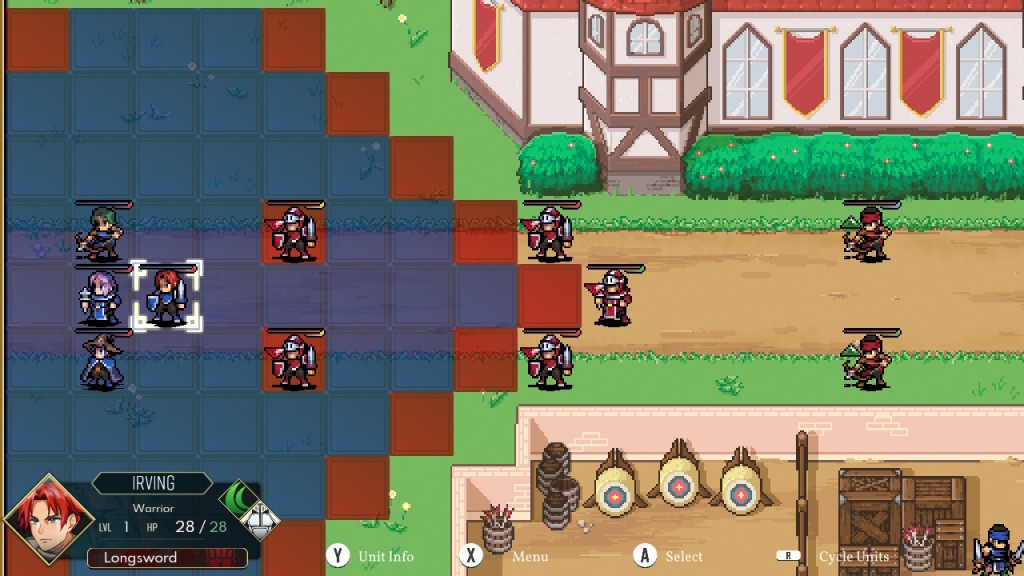
I was initially drawn to the art style of Dark Deity, and once I found out that it was a turn-based strategy RPG, I was even more interested in it. It seems to take inspiration from Fire Emblem as well as Langrisser, which are both series I’ve enjoyed.
I thought it was an interesting idea to include campaign customization, with options to randomize the items you receive or the order in which characters join your party. There are also three difficulty levels.
After deciding on your preferred play style, the story begins. The king apparently decided to start a war with another nation due to his unproven suspicions that they were involved with his father’s assassination. His kingdom is not prepared for war, and he decides to recruit not only the graduates from a local military academy, but all of their students for his war.
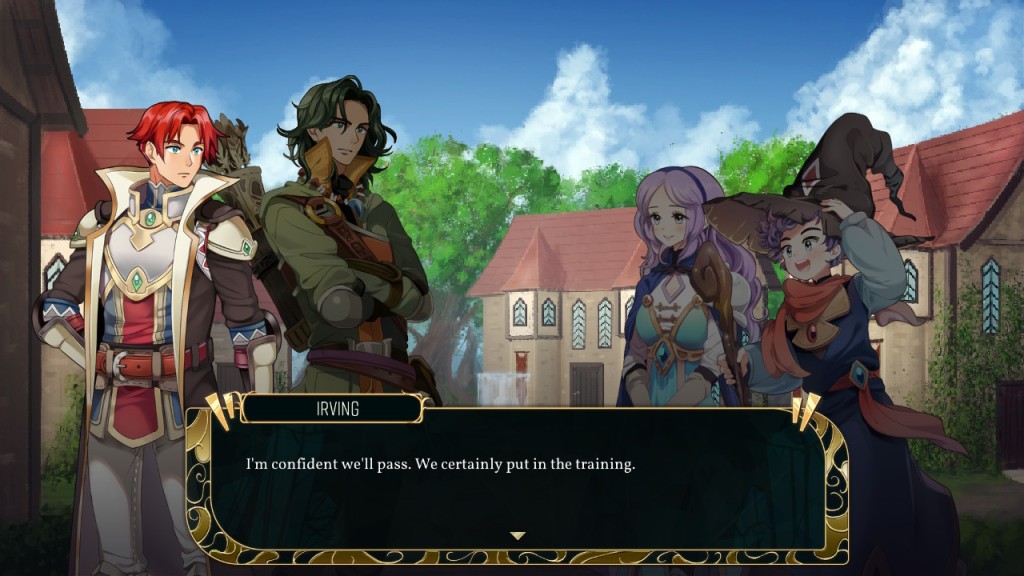
The newly conscripted soldiers include a young man named Irving and his friends – including the younger, inexperienced Alden. The king’s decision to conscript students who haven’t graduated from the military academy yet is not very popular, but the military higher-ups feel that they have no choice but to obey the unforgiving king’s orders.
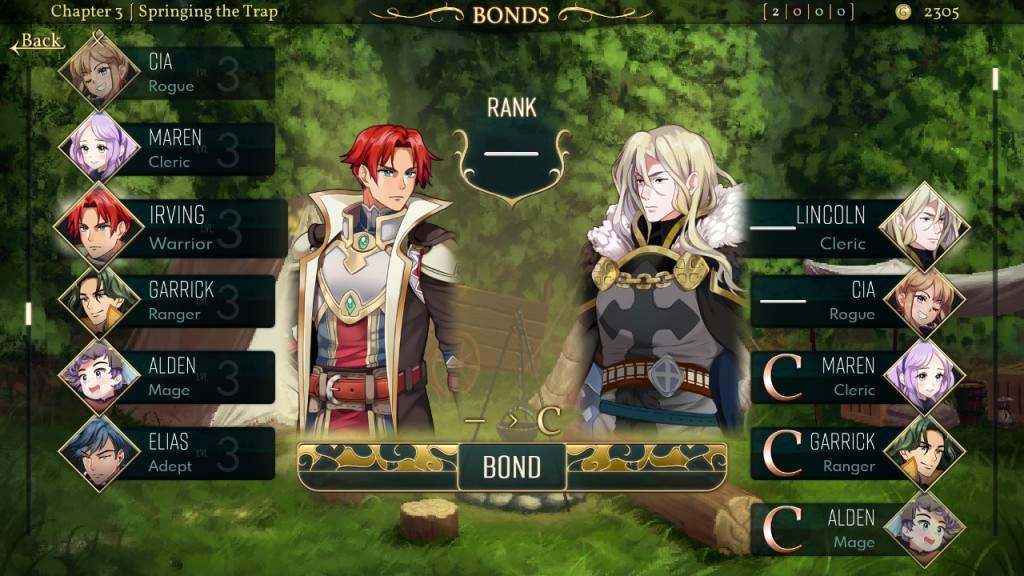
As you travel across the land, additional party members will choose to join you. Similar to Fire Emblem, the game has a support conversation system called “Bonds.” Each character has 10 characters they can bond with, and the bond levels do not have any impact in combat, which I would have liked to see. What’s really unfortunate is that there are not any battles outside of the 28 chapter battles, so you cannot grind and you won’t be able to see every support conversation in one playthrough. There are 30 playable characters and you can only use 14 in battle. You’ll generally want to use the same units in every battle in order to keep them at the right level for each chapter.
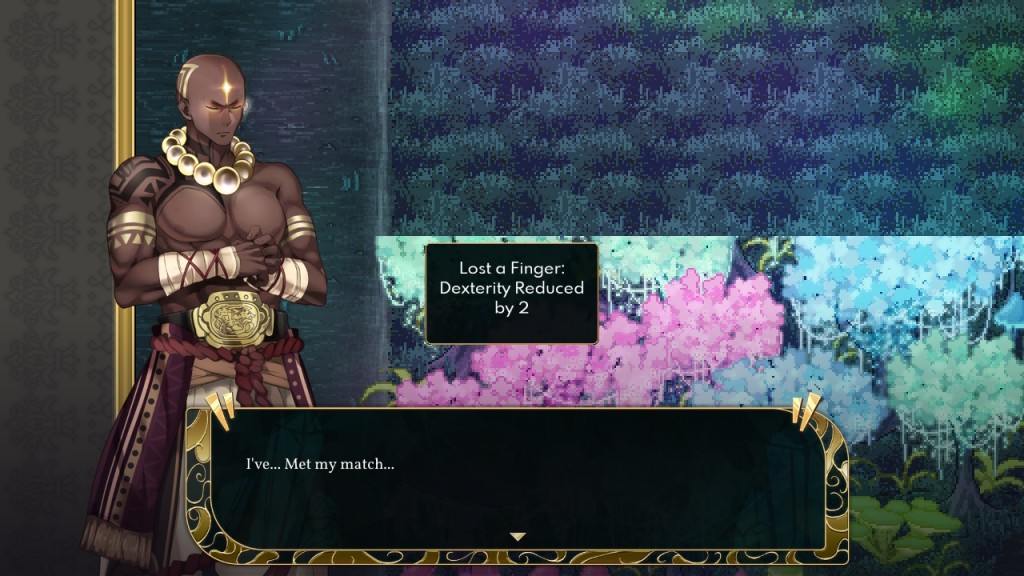
I did really like the way that they handled losing units in battle. Instead of a more punishing permadeath, they implemented a system where units will lose points in one of their stats when they’re defeated. They say that a character “lost a finger” or was injured in some other way when they are defeated, and their dexterity or some other stat will decrease permanently. I thought it was a more realistic system than not having any consequences for defeat, and it was more lenient than losing characters permanently.
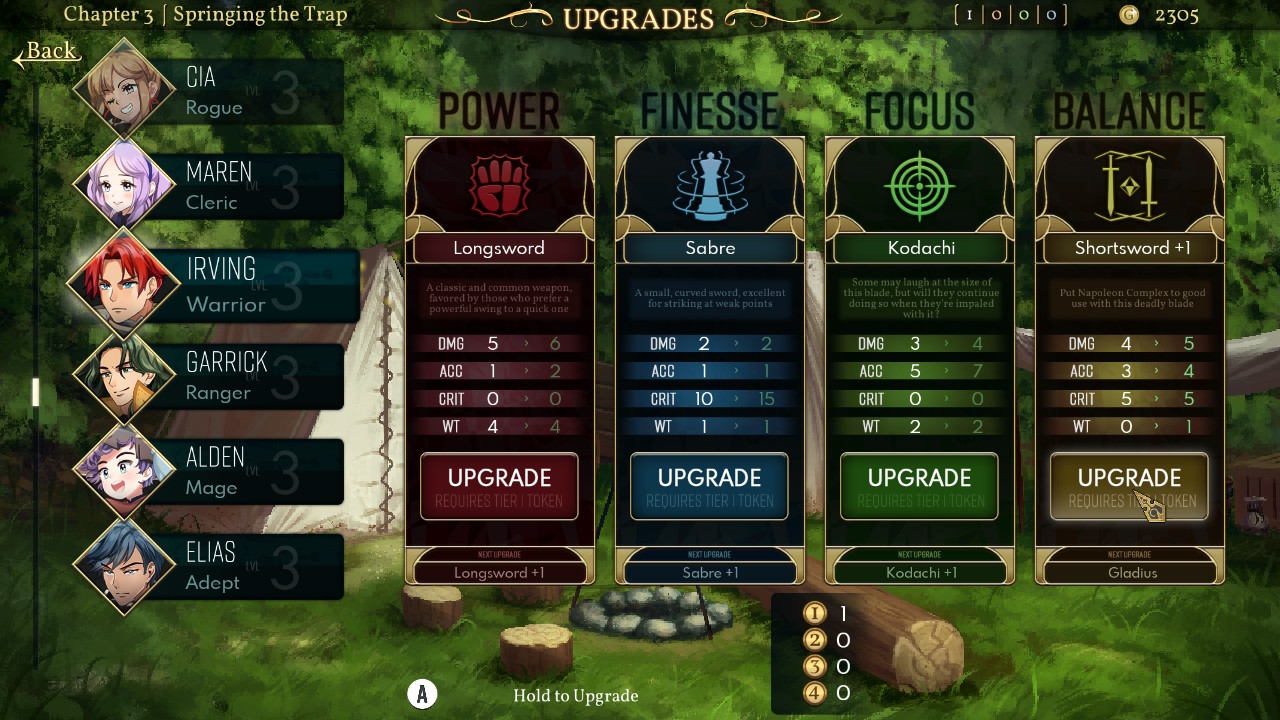
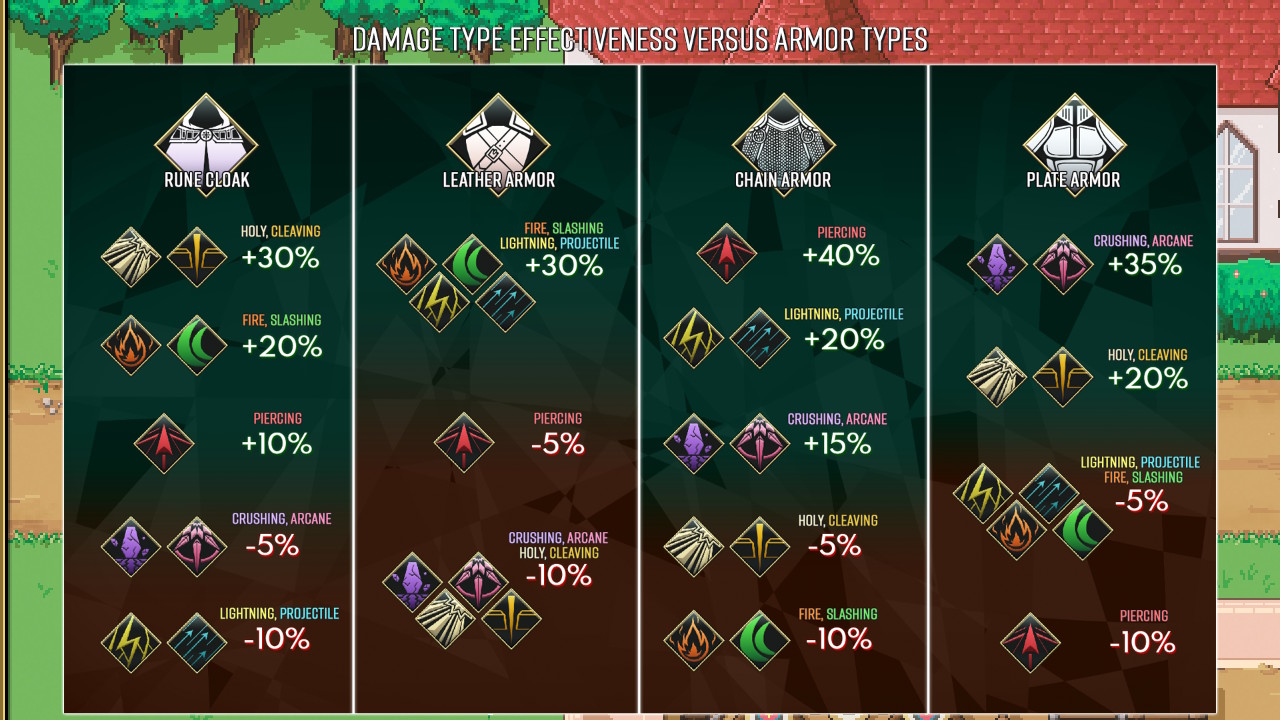
I found the upgrade system a little confusing though – you improve one of four weapons for each character by using “tokens.” You can acquire these tokens in battle or from the shop, but due to the lack of extra battles (and possible money) it was difficult to afford enough tokens for all of my usual units. The weapon categories for each unit include power, finesse, focus, and balance. I wasn’t sure what weapon(s) I was meant to improve for each character, and I also found the chart for damage effectiveness against different armor types confusing and complicated.
There are also some special items you can equip on your units known as “Aspects,” which provide effects such as swapping the value of 2 stats, increasing damage, and more. You can’t acquire more than one of each Aspect, so you’ll need to choose their users carefully.
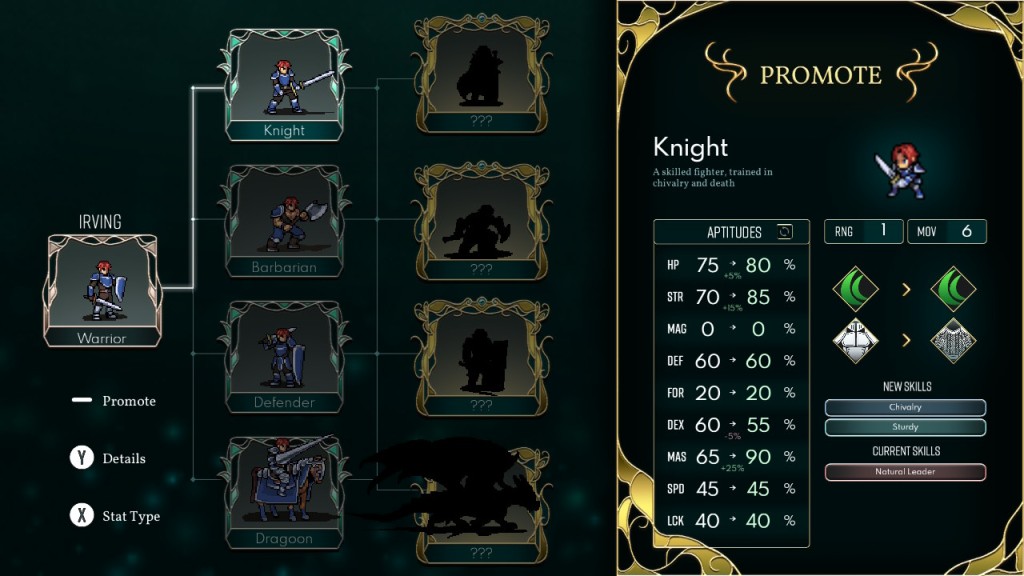
Each unit has a 3-tiered class tree – there are four options in the second and third level. They show you how each class will impact the unit’s stats, abilities, and appearance. I especially liked the Dragon Knight, Thunderlord, Illusionist, and Phantom classes. Characters start out with one class and stay in that general “lane.” You can’t change someone who started as an archer into a mage, and you also can’t change someone back into a class from another level if you aren’t satisfied with what you decided on the first time. There aren’t any seals to change characters into classes because the promotions are tied to specific level increases.
Battles are pretty lengthy, which surprised me in a good way. I played on the normal difficulty, and I didn’t think it was too easy. It wasn’t incredibly difficult either, but I felt it was just about right in terms of difficulty. You don’t always have to defeat every enemy on a map; some maps will have a boss to defeat and then will require you to escape. Other maps simply require you to survive for a certain amount of turns. It could be difficult to keep all units alive sometimes because you can only use items on the unit that’s carrying them. If you fail to restock a unit’s inventory with healing items in order to prepare them for battle, it’s likely that they’ll be defeated if a healer can’t get to them in time.
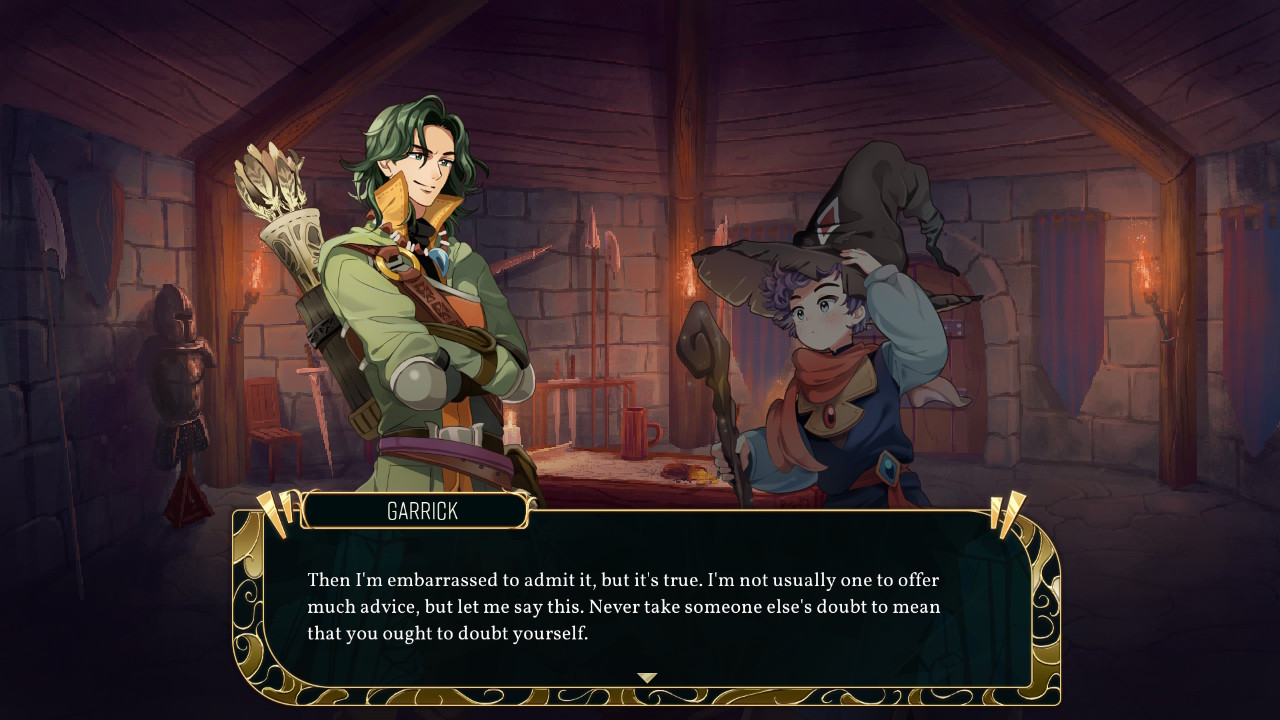
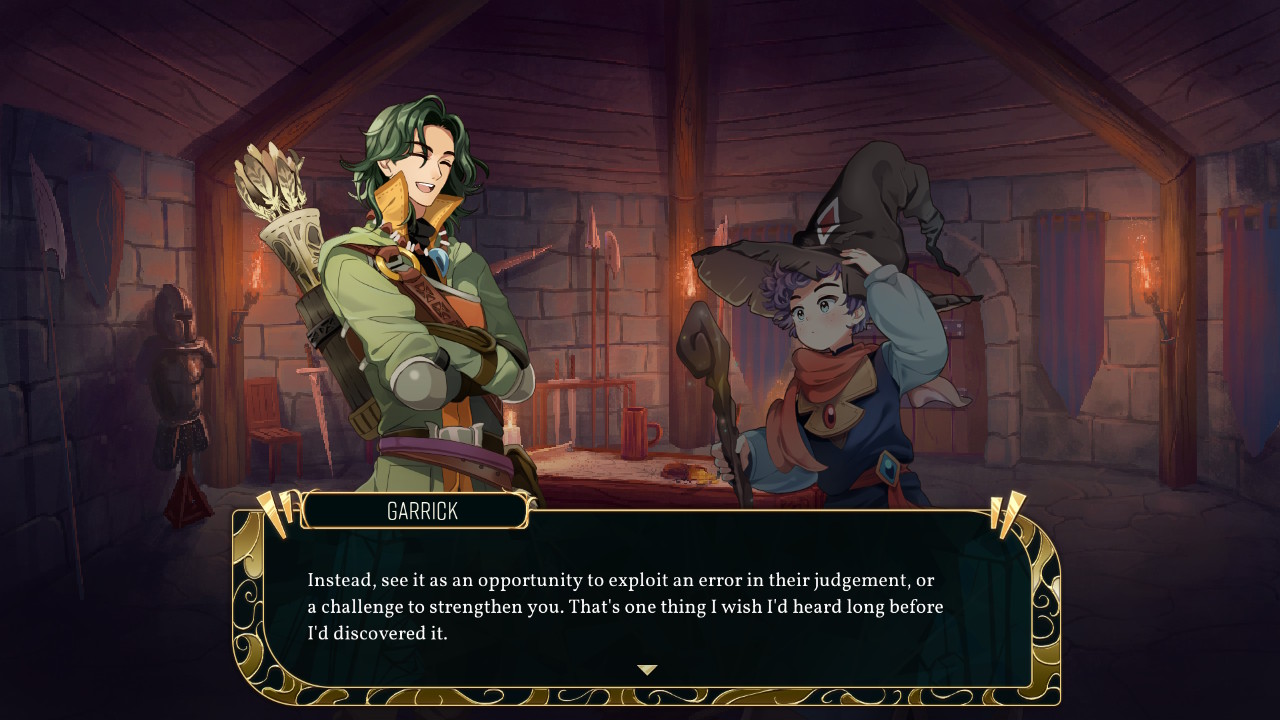
I felt that the plot was just okay. I did like the characters – especially their designs. While the storyline often felt a little contrived in terms of characters suddenly making illogical decisions that felt out of character to me, I still thought that the actual dialogue used to convey said story was well-written overall. There is partial voice acting for some of the dialogue as well as the phrases units shout in battle. I thought the music was also quite impressive, and I really liked the character art and the art style overall. Although the story felt disjointed at times, I appreciated that they did not use a lot of the usual tropes I’ve seen in RPGs before. I do wish that there were brief summaries of the characters’ lives post-game in the credits or something, although we get a brief glimpse in the final segments of dialogue.
Switch it ON or Switch it OFF? Overall, I was impressed by the strategy RPG that is Dark Deity. I wish we could play around more with character builds, and while the story wasn’t the strongest I’ve seen, it was still a pretty decent effort. The art style and soundtrack were major pluses for me, and I thought that the battles were very well designed. I enjoyed the ~30 hours I spent playing the game, and hope that the developers make a sequel to let us know what Irving and his friends do next. Don’t leave us in the…Dark Deity! 😉 7.5/10
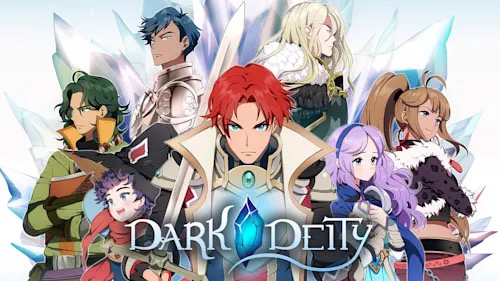
Leave a comment